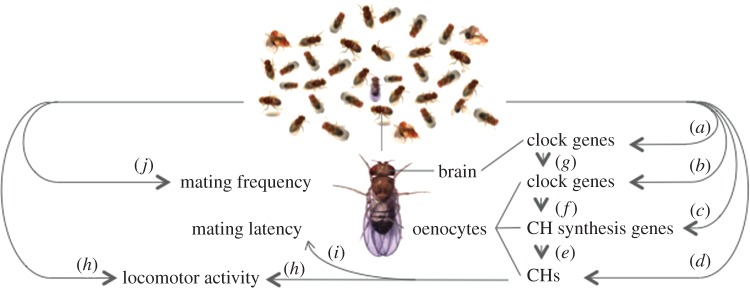Figure 1.

The circadian timing system mediates social synchrony in Drosophila. The diagram depicts various measurements of social influence on individual gene expression and pheromones (arrows on the right) and behaviour (arrows on the left). The social group affects clock gene expression in the head (a) and in peripheral clock cells that make up the oenocytes (b), a tissue where cuticular hydrocarbon pheromones (CHs) are synthesized. The social group also affects CH levels (d) and a metabolic enzyme, desat1 (c), which is regulated by the oenocyte clock (f) [15] and involved in the production of sex pheromones (e). Volatile pheromones affect locomotor activity (h) [12] and the latency to mate (i) [21]. Social synchrony is mediated by the adjustment of clocks within individuals. Our current hypothesis suggests that chemical stimuli from other flies alter circadian pacemaker neurons in the brain (g) which in turn regulate peripheral clocks (f) to influence patterns of communication and behaviour (h–j) [23]. Although effects of light and temperature on clocks are usually discussed in terms of phase, effects of social groups may also influence amplitude of clock gene expression. In addition, an individual's output may feedback onto the group and onto itself; however, to our knowledge, these possibilities have not been addressed in the literature. Note that clocks associated with chemosensation are not shown.
